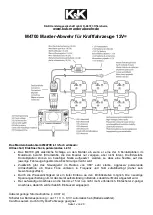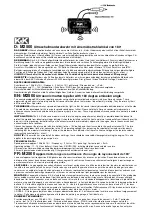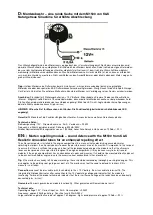
(3) Turn the ignition switch to the On position to
check for battery voltage at the turn signal fuse in
the junction block; or, leave the ignition switch in the
Off position to check for battery voltage at the haz-
ard warning fuse in the PDC. If OK, go to Step 4. If
not OK, repair the open circuit as required.
(4) Turn the ignition switch to the Off position.
Disconnect and isolate the battery negative cable.
Unplug the combination flasher from the junction
block and replace it with a known good unit. Connect
the battery negative cable. Test the operation of the
turn signal and hazard warning systems. If OK, dis-
card the faulty combination flasher. If not OK,
remove the test flasher and go to Step 5.
(5) Turn the ignition switch to the On position.
Check for battery voltage at the fused ignition switch
output circuit cavity for the combination flasher in the
junction block. If OK, go to Step 6. If not OK, repair the
open circuit to the turn signal fuse as required.
(6) Turn the ignition switch to the Off position.
Check for battery voltage at the fused B(+) circuit
cavity for the combination flasher in the junction
block. If OK, go to Step 7. If not OK, repair the open
circuit to the hazard warning fuse as required.
(7) Disconnect and isolate the battery negative
cable. Check for continuity between the ground cir-
cuit cavity for the combination flasher in the junction
block and a good ground. There should be continuity.
If OK, go to Step 8. If not OK, repair the circuit to
ground as required.
(8) Unplug the multi-function switch wire harness
connector as described in this group. Check for con-
tinuity between the combination flasher hazard sig-
nal circuit cavities in the junction block and in the
multi-function switch wire harness connector. There
should be continuity. If OK, go to Step 9. If not OK,
repair the open circuit as required.
(9) Check for continuity between the combination
flasher turn signal circuit cavities in the junction
block and in the multi-function switch wire harness
connector. There should be continuity. If OK, test the
multi-function switch as described in this group. If
not OK, repair the open circuit as required.
MULTI-FUNCTION SWITCH
Perform the diagnosis of the hazard warning
and/or turn signal systems as described in this group
before testing the multi-function switch. For circuit
descriptions and diagrams, refer to 8W-52 - Turn Sig-
nals in Group 8W - Wiring Diagrams.
WARNING: ON VEHICLES EQUIPPED WITH AIRBAGS,
REFER TO GROUP 8M - PASSIVE RESTRAINT SYS-
TEMS BEFORE ATTEMPTING ANY STEERING WHEEL,
STEERING COLUMN, OR INSTRUMENT PANEL COM-
PONENT DIAGNOSIS OR SERVICE. FAILURE TO TAKE
THE PROPER PRECAUTIONS COULD RESULT IN
ACCIDENTAL AIRBAG DEPLOYMENT AND POSSIBLE
PERSONAL INJURY.
(1) Disconnect and isolate the battery negative
cable. Unplug the multi-function switch wire harness
connector.
(2) Using an ohmmeter, perform the switch conti-
nuity checks at the switch terminals as shown in the
Multi-Function Switch Continuity chart (Fig. 3).
(3) If the switch fails any of the continuity checks,
replace the faulty switch. If the switch is OK, repair
the lighting circuits as required.
8J - 4
TURN SIGNAL AND HAZARD WARNING SYSTEMS
ZJ
DIAGNOSIS AND TESTING (Continued)
Содержание Colorado 1998
Страница 8: ......


























